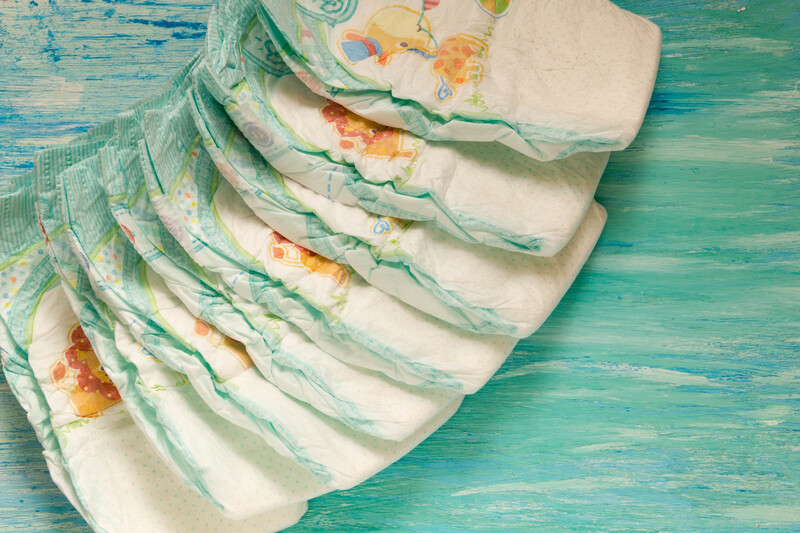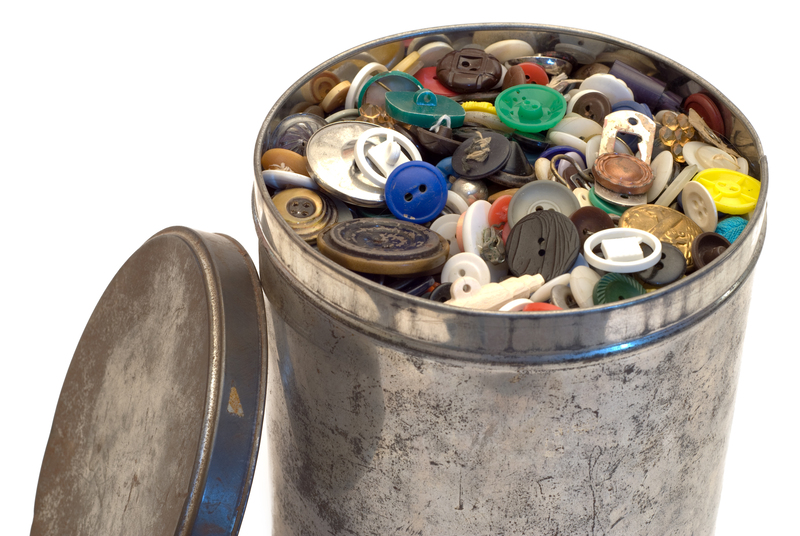Reducing Environmental Harm When Disposing of PPE Waste
The pandemic highlighted the importance of Personal Protective Equipment (PPE) in safeguarding public health. However, the surge in PPE waste--including masks, gloves, gowns, and face shields--has resulted in significant environmental challenges. As global PPE consumption continues, finding sustainable solutions to minimize environmental harm from its disposal is now critical. In this article, we delve into effective strategies, innovative approaches, and actionable tips to reduce environmental impact when disposing of PPE waste.

Understanding the Scale and Impact of PPE Waste
PPE waste is predominantly considered single-use plastic, which is non-biodegradable and often ends up in landfills, incinerators, or worse--our oceans. According to the United Nations Environment Programme, an estimated 75% of used masks and other pandemic-related waste will end up in landfills or floating in the seas. This has far-reaching consequences for wildlife, ecosystems, and human health.
- Discarded PPE contributes to microplastic pollution in water bodies.
- Improperly managed waste serves as a vector for disease transmission.
- Pile-up of PPE in urban areas disrupts waste systems and clogs sewers.
- Incineration of PPE releases toxic gases, contributing to air pollution.
Understanding the magnitude of PPE waste is the first step towards responsible management.
The Environmental Consequences of Improper PPE Disposal
- Plastic Pollution: Most PPE items are made of polypropylene and other synthetic fibers that do not degrade, adding to existing plastic waste streams.
- Threat to Wildlife: Animals can mistake PPE for food or get entangled, leading to injury or death.
- Chemical Leachate: Degrading PPE can release harmful chemicals into groundwater and soil.
- Carbon Emissions: Manufacturing and disposing of single-use PPE contributes to greenhouse gases.
Best Practices for Disposing PPE Waste Responsibly
Segregation and Collection
Proper segregation is the cornerstone of safe disposal. PPE waste should always be separated from household and food waste to prevent contamination and facilitate appropriate processing.
- Designated Bins: Use marked bins or bags for collecting used PPE. Label them as 'PPE Waste' to distinguish from regular rubbish.
- Secure Storage: Ensure PPE waste is securely bagged, avoiding any leaks or spills.
- Community Collection Points: Establish community drop-off points for mask and glove disposal, especially in densely populated areas.
- Infectious Waste Management: In medical or quarantine settings, adhere to infectious waste handling protocols.
PPE Waste Treatment Options
- Autoclaving: High-pressure steam sterilization deactivates pathogens, making PPE safe for further handling or recycling.
- Microwave Disinfection: Industrial microwaves destroy microorganisms in PPE waste before further processing.
- Incineration: While effective at destroying pathogens, unregulated incineration can be harmful to the atmosphere. Use only in facilities with air pollution controls.
- Chemical Disinfection: Involves soaking PPE in approved solutions to neutralize biological hazards.
It is essential to choose the method that minimizes environmental damage while ensuring public health safety.
Adopting Eco-Friendly Alternatives to Single-Use PPE
Reusable PPE Products
Switching from single-use to reusable PPE--where appropriate--significantly reduces waste. Innovations in reusable masks and washable gowns can cut the reliance on disposables. These products, crafted from durable, non-toxic materials, can be disinfected and reused multiple times, offering both cost and environmental benefits.
- Cloth Face Masks: Easily washable and reusable, recommended for the general public.
- Reusable Gowns: Ideal for healthcare settings, provided proper laundering protocols are followed.
- Durable Face Shields: Can be sanitized between uses, again reducing overall waste.
*Widespread adoption of reusable PPE can significantly reduce the flow of disposable gear into municipal waste streams.*
Biodegradable and Compostable PPE
Researchers and manufacturers are developing biodegradable PPE made from plant-based fibers, bioplastics, and natural polymers. These materials decompose naturally, causing minimal damage if disposed of properly.
- Compostable Masks and Gloves: Made from cellulose and other organic compounds; safe for industrial composting facilities.
- Sustainable Packaging: Opt for PPE sold in recyclable or biodegradable packaging.
Recycling Programs for PPE Waste
Recycling PPE waste is challenging due to contamination and mixed-material composition. Nevertheless, specialized initiatives and new technologies are emerging:
- Closed-Loop Recycling: Certain firms collect used masks and, after disinfecting them, convert the plastic into new products, such as benches or construction materials.
- Industrial Processing: Some facilities use pyrolysis or advanced chemical recycling to break down PPE polymers into raw materials for reuse.
- Community Recycling Initiatives: Partner with local authorities or environmental groups to introduce mask collection and recycling drives.
*If local recycling is unavailable, pressure authorities or businesses to adopt sustainable PPE waste management policies.*
Challenges in PPE Recycling
- PPE often contains different plastics and metal nose strips, complicating the recycling process.
- Virus-contaminated PPE requires sterilization before recycling, adding logistical complexity.
- Lack of infrastructure and public awareness limits widespread implementation.
Innovative recycling solutions are required to scale up and accommodate the global volume of PPE waste efficiently.
How Individuals Can Minimize PPE Waste and Its Environmental Impact
Personal Responsibilities
- Opt for Reusable PPE: When not in high-risk environments, choose washable face masks and gowns.
- Avoid Littering: Never dispose of PPE on the street, in waterways, or in nature reserves.
- Educate Others: Raise awareness about responsible PPE disposal among family, friends, and colleagues.
- Participate in Local Clean-ups: Join or organize events to remove PPE litter from the environment.
*Each individual's choices matter: reducing PPE litter is a collective responsibility.*
Proper Home Disposal Techniques
- Place used PPE in a separate, sealed plastic or paper bag after use.
- Dispose of the bag in designated PPE or hazardous waste bins if available. Otherwise, place it in a covered general waste bin.
- Wash your hands thoroughly after handling used PPE.
- Avoid touching your face or personal items during disposal.
Organizational Strategies for Responsible PPE Waste Disposal
Hospitals and Healthcare Facilities
- Follow Medical Waste Regulations: Segregate PPE waste at source and use color-coded containers.
- Invest in On-site Sterilization: Deploy on-site autoclaving or disinfection to minimize transport and risk.
- Monitor Waste Generation: Track PPE usage patterns to optimize procurement and disposal processes.
- Train Staff: Regularly educate staff about the environmental and health implications of improper PPE waste management.
Businesses and Workplaces
- Provide clear instructions for staff and customers on PPE disposal.
- Install visible, labeled PPE disposal bins in key locations.
- Coordinate with local authorities or waste contractors for specialized collection services.
- Explore partnerships with PPE recycling initiatives or vendors who offer sustainable alternatives.
Emerging Technologies and Solutions for Sustainable PPE Waste Management
Research and Innovation
Ongoing research is driving breakthroughs in eco-friendly PPE design, waste-to-energy conversion, and advanced recycling. Promising approaches include:
- Enzymatic Degradation: Scientists are cultivating enzymes that can break down synthetic PPE plastics rapidly under controlled conditions.
- Pyrolysis: High-temperature pyrolysis converts PPE polymers into fuels or chemical feedstocks, creating a renewable waste-to-energy cycle.
- Upcycling Initiatives: Designers and entrepreneurs are transforming collected PPE material into useful items like construction bricks and hard plastic tiles.
*Supporting innovation is key to reducing the long-term impact of PPE waste on the environment.*
Policy and Regulatory Approaches
- Government Guidelines: Many countries have issued specific guidelines on PPE disposal to minimize environmental harm.
- Producer Responsibility Schemes: Mandating PPE producers to participate in take-back and recycling programs.
- Waste Reduction Targets: Setting legally binding limits on single-use PPE and incentivizing alternatives.
*Comprehensive policy frameworks ensure accountability and shared responsibility across the supply chain.*

Environmental Campaigns and Community Action
Community engagement and education form the backbone of sustainable PPE waste disposal. Nonprofit organizations, local governments, and environmental groups are:
- Organizing public clean-up drives targeting PPE litter.
- Distributing educational material on safe disposal of used masks and gloves.
- Advocating for increased investment in sustainable PPE alternatives and recycling infrastructure.
"We all breathe the same air," as the saying goes--community action ensures that everyone does their part in protecting our surroundings.
Conclusion: Building a Sustainable Future in PPE Waste Management
Reducing environmental harm when disposing of PPE waste is a vital challenge for our times. As individuals, organizations, and communities, adopting responsible disposal methods, supporting innovation, and advocating for sustainable alternatives will protect both public health and our planet.
To summarize, here's how you can help:
- Choose reusable or biodegradable PPE when possible.
- Dispose of single-use PPE responsibly and never litter.
- Support and engage in recycling and upcycling programs.
- Stay informed and participate in environmental campaigns.
- Advocate for stronger waste management policies in your community.
By following best practices and embracing innovation, we can significantly reduce the environmental impact of PPE waste and move towards a greener, safer world for everyone.